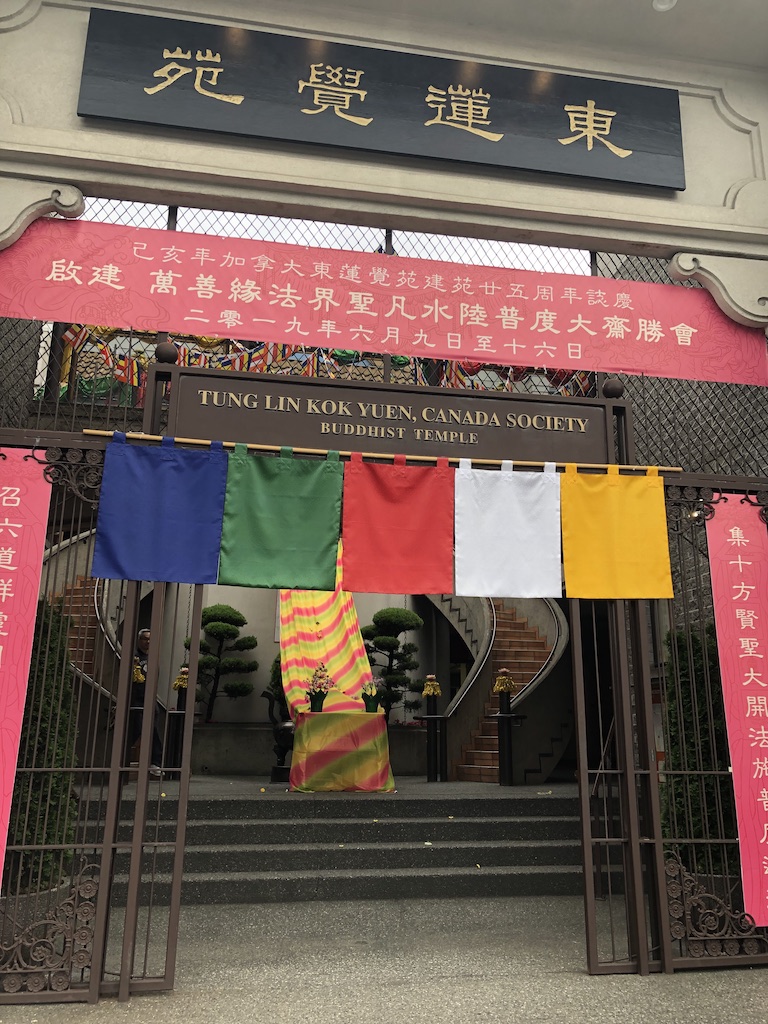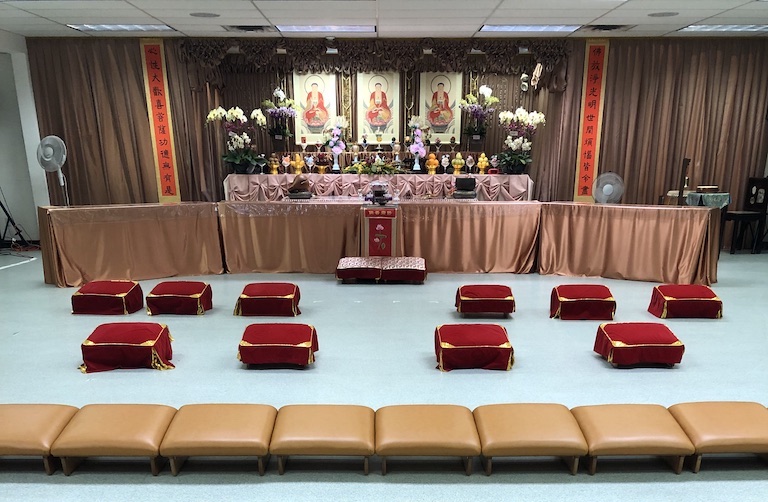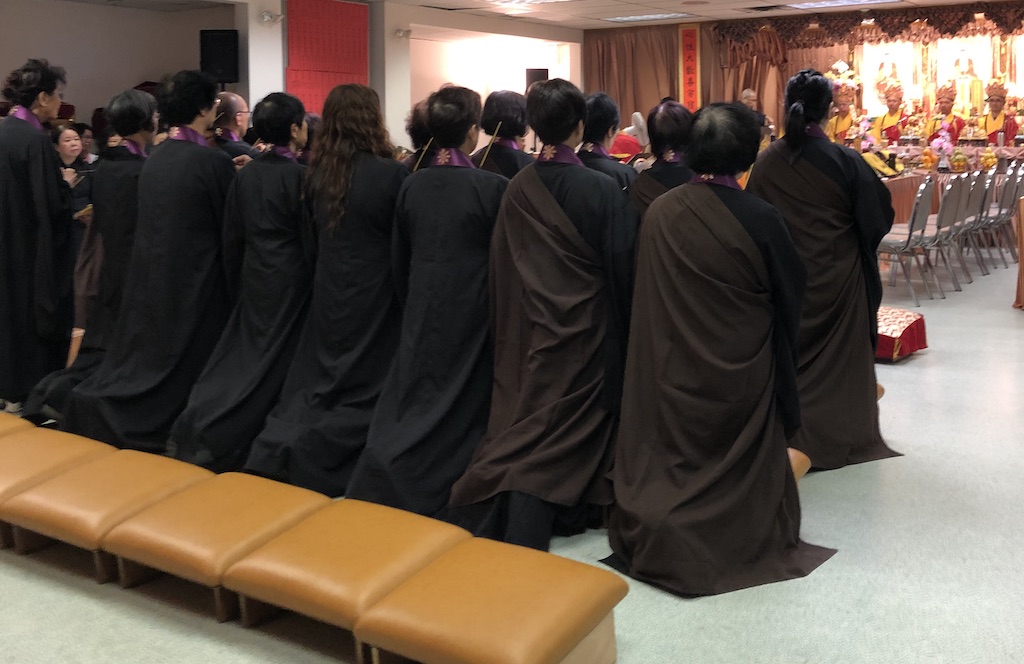The 25th anniversary of Tung Lin Kok Yuen Canada Society (TLKY CS) in Vancouver was marked by the shuilu fahui ritual last month. It is so grand and taxing that not every temple can host it. Those that do, commit considerable time and resources of both a financial and human nature to ensure this ritual’s success. TLKY CS holds it every five years, while in recent years other large Buddhist temples and organizations in Asia, such as Tsz Shan Monastery and Amitofo Care Centre (ACC) in Malaysia, have held the shuilu fahui on grand scales. Collectively, these rituals accrue spiritual merit on part of their organizers and donors, while giving the monastic and lay communities a rare opportunity to be part of something quite extraordinary.
This year, TLKY CS held the ritual from 10 June to 16 June, although I was only present for the last couple of days during our team’s visit last month. I had written an introductory article on the shuilu fahui in April as a kind of prelude to the main event in Vancouver, but it was no substitute for seeing it in person. I felt deeply moved and impressed by the care and attention, given over many months, to the setup and preparation of the Inner and Outer Altars, as well as the execution proper of the shuilu fahui.
Most English-language writers can take their pick from a wide repertoire of translations, from “Liberation Rite of Land and Water” to “Water-Land Dharma Ceremony.” I prefer simply the transliteration of “shuilu fahui,” since the translated names are a bit cumbersome to me, and it is difficult for a few Latin letters or Chinese characters to really capture the length and majesty of this ritual.

Even Chinese Buddhists can feel disoriented by the shuilu fahui’s incredible length, scope, and hybrid doxology. We almost cannot fully appreciate its scale and complexity, and participants are often taking part in a specific segment of the process. No other Chinese Buddhist ritual incorporates the main texts of (effectively) every extant major school that shaped the philosophical development of Chinese Mahayana. During this ritual, the talents, knowledge, and energy of the monastic assembly and cantors are tested to their limits. In the Outer and Inner Altars, the seven days include recitations and invocations from the central scriptures of Chan, Pure Land, Huayan, and Tiantai, while incorporating the more folkloric Tiantai practice of “Saving and Feeding the Burning-mouth Hungry Ghosts” (yankou).
This ritual has a complex history, dating to at least the Song dynasty (960–1279) and associated with an even earlier figure, Emperor Wu of Liang (464–549). It has fulfilled many socio-religious functions in Chinese society through the ages. Today, throughout the Sinophone world and overseas Chinese communities like Vancouver, it provides a platform for religious community, which Emile Durkheim (1858–1917) saw as something binding, regulating, and meaning-giving. Religion is something that “happens” alongside profane or ordinary life, providing a space for participation in mundane existence’s sacred or wondrous counterpart.
This has been especially meaningful in the context of the shuilu fahui in Vancouver. There were volunteers and participants from around the world at this year’s ceremony, but the majority were Chinese Canadians from the Vancouver area and British Columbia (BC). It was very heartening to see such an enthusiastic turnout of volunteers and lay Buddhists participating over the busy week.

As we left TLKY CS for the time being and departed for the airport back to Hong Kong, I felt a renewed awe of the heritage of the Chinese Mahayana tradition. It is easy for Buddhist laymen and laywomen who are “set forth on the Mahayana” (mahayana-samprasthita) to sometimes slip into ignorance and complacency over the years, despite sincere intentions and earnest practice. To be reminded of my inexperience with one of Chinese Buddhism’s greatest rituals, and little I know of the path as a whole, was inspiring as well as humbling. I look forward to learning more, and more.
Related features from Buddhistdoor Global
A Feast of Liberation: Tung Lin Kok Yuen Canada Society’s shuilu fahui

